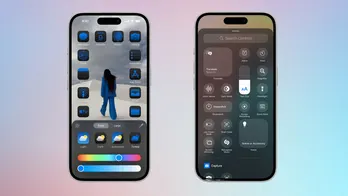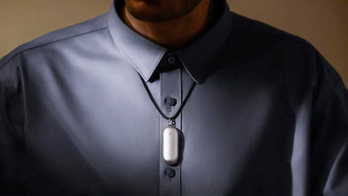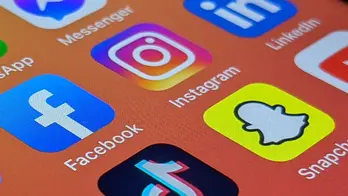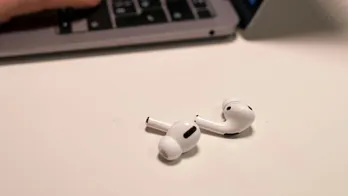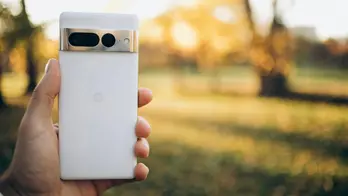I revamped my personal brand using this 5-step process. Here's how it went.
I've struggled with my personal brand for a long time. If you looked at my Instagram last year, you'd find no rhyme or reason in what I posted: a photo of a scenic morning run, a cheesy selfie with my husband — and every now and then, a post about an episode I hosted for Life Kit.
As an NPR reporter, my public persona is more visible than others — and thus more open to observation and scrutiny. But I'm not sure how best to present myself and my professional life on social media.
So I turned to personal branding coach Lynda Peralta for help. She teaches marketing at George Washington University — and since 2020, has been leading workshops on her 5-step process to build an authentic calling card for yourself, both online and offline.
The power of personal branding
Personal brands give people the power to write their own narrative, says Peralta. It creates the opportunity to bring yourself closer to the person you want to be and reach your goals, whether it's launching a new business or reinventing yourself.
Studies have shown there are positive benefits to boosting your public image. One paper from 2019 published in Frontiers in Psychology found that among study participants, engaging in personal branding activities led to greater career satisfaction in the form of higher perceived employability. And in a systematic review of studies on the topic, researchers found that personal branding can lead to greater self-esteem and the belief that one's actions are responsible for successful outcomes.
My big experiment
As for me, I wanted to try her 5-step method to establish myself as an authority for service journalism — the kind of consumer-oriented reporting I do for Life Kit — on my Instagram account. So I tried it from September to December 2022. Here's how my experiment went, along with Peralta's steps.
Step 1: Do an 'image audit'
Peralta says to start the process with what she calls an "image audit": ask people in your life to share three words that describe you. These keywords can help you get a clearer picture of how people perceive you and can provide a baseline for building your brand, she says.
When I asked my family, friends and colleagues for their three words, a lot of the feedback aligned with how I think of myself: "energetic," "kind," "creative" and "thoughtful." People also mentioned words related to my career: "leadership," "journalism" and "public speaking."
I found the outlier words most illuminating. My best friend, for example, called me "reliable" (I think I'm all over the place, but she said she sees me as loyal). And a coworker said I was "effervescent."(I would never think to describe myself that way, but it was lovely to hear.) These descriptors encouraged me to see myself from a different perspective.
Step 2: Create your brand — and try it out
Next, pick a few words that you would choose to describe the ideal version of yourself. These words don't have to be the same ones your community chose for you, and you don't have to stick to just three, says Peralta.
The words I identified with most were "helpful," "engaging" and "connector." I've always been interested in leadership and public speaking (I was president of my class all four years of high school), and the terms matched the kind of advice-driven storytelling I do for Life Kit.
Peralta says to start testing your new brand out by dropping verbal and visual cues in your social media profile. Here are a couple ways you can do that:
Revamp your bio: Write new descriptions for yourself on social media using your new keywords as inspiration. In the past, my Instagram bio read: "nap seeker, journo & podcast producer @npr" and included a link to my NPR bio page. That was OK, but I felt like it didn't convey enough about my job or my personality.
So I tweaked it to: "reporter-producer for Life Kit, aka that one girl from the @npr advice videos" and "professional service journalist, amateur helpful human," along with some emojis that hint at my background (Filipino, married, Libra). The new bio offers a clearer picture of the work I do and the personal content I might offer on my page.
Change up your images: My photos on social media were almost always about my personal life. But since settling on my three words, I've made an effort to feature more of my Life Kit work on my grid. Every time I published a new episode of Dear Life Kit, the advice column I host for NPR, I promoted the episode with a photo and a story about how it relates to my life. Those are now some of my most popular posts.
In the few months since those changes, I've seen small but significant progress. My follower count has grown by over 150 people, and I've had a bump in public speaking requests from universities and media organizations.
Peralta says she's not surprised by the engagement. Someone will have been doing the same job for years, she says, "but it's not until they start tooting their own horn [about their work on social media] that they start getting recognition and opportunities."
Step 3: Take your branding efforts offline
Now comes the hard part. Take deliberate action to live up to your brand in real life, says Peralta. Depending on your goals, that could look like going to networking events, taking classes to amp up your skills or going to a meetup that aligns with your interests.
This step is about shutting down imposter syndrome and closing the gap between who you think you are and who you aspire to be, says Peralta.
For me, this looked like owning my identity as a reporter by accepting an opportunity at a university to talk about what I do. That wasn't easy for me. I only graduated from journalism school five years ago, so I sometimes struggle with feeling qualified to give anyone advice. But once we got started, the conversation flowed, and afterward, a handful of students reached out to thank me for my thoughts. The experience showed me that I might have a more industry insight than I'd been giving myself credit for.
Step 4: Find your 'first 5 friends'
Identify five people or organizations, either online or offline, whose interests align with yours, says Peralta. This step can help you grow a network around your new personal brand, she says.
Then, get involved in their community. Start hanging out in your favorite podcaster's comment section. Join that musician's fan club. You might be surprised who you meet along the way, says Peralta.
One of my "first five friends" was @latimes.404 on Instagram. It's a new social media project by The Los Angeles Times that produces how-to content for Angelenos that I find delightful. I love their use of a purple sheep hand puppet named Judeh to deliver news and answer reader questions.
The account gives me fun ideas of what I can do in my own work. (Does Life Kit need a puppet?) And by looking at who the account follows, I've found other interesting creators, like the San Diego Union Tribune Opinion page, which offers helpful video explainers for locals in San Diego, where I live.
Step 5: If it's not fun, stop and rethink
Your personal brand journey should be about discovery, experimentation and fun, says Peralta. "If at any point you start to dread showing up as yourself, it could be a signal that you are not leading with authenticity."
If this happens, she suggests going back to Step 1. Remind yourself of all the nice things the people in your life have said about you. Then, reevaluate the words you chose for your personal brand and do each step again from there.
How the experiment went
Peralta's 5-step personal branding exercise showed me that I don't have to choose between showcasing my work and the "real" me. They can exist together, and my audience can appreciate both sides. For example, for Life Kit's episode on grief, I shared a little about the loss of my grandpa in addition to the expert advice. When I opened a small window to my personal struggles, my followers did the same.
There were times, however, that the process felt like a burden. It was time-consuming to post so frequently. And I felt pressure to beat the stats on the posts I had before.
But overall, working on my personal brand has given me a lot of clarity about who I am and who I want to be. Peralta says that's a win and a great start – but only a start.
If I really wanted to make a name for myself, she says, I have a lot more work to do. A personal brand is an ongoing process, she adds. "Why stop at 3 months?"
The audio portion of this episode was produced by Sylvie Douglis. The digital story was edited by Malaka Gharib. We'd love to hear from you. Leave us a voicemail at 202-216-9823, or email us at LifeKit@npr.org.
Listen to Life Kit on Apple Podcasts and Spotify, or sign up for our newsletter.
Disclaimer: The copyright of this article belongs to the original author. Reposting this article is solely for the purpose of information dissemination and does not constitute any investment advice. If there is any infringement, please contact us immediately. We will make corrections or deletions as necessary. Thank you.
